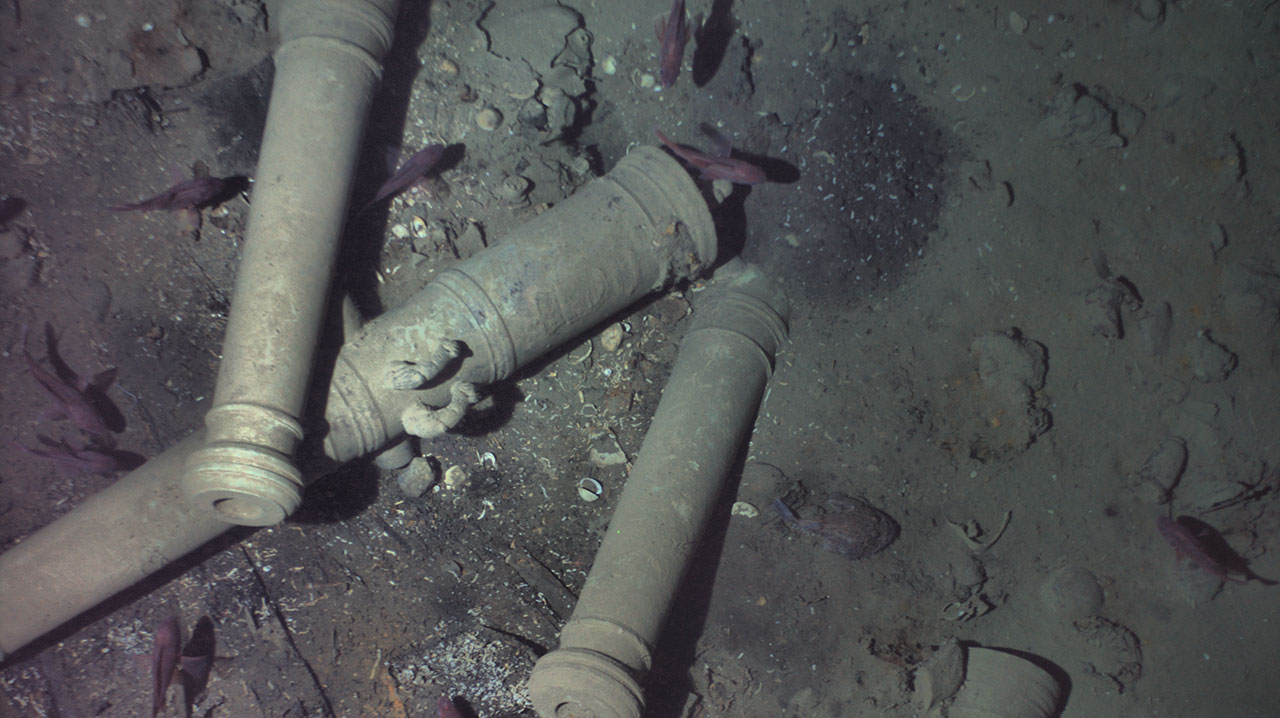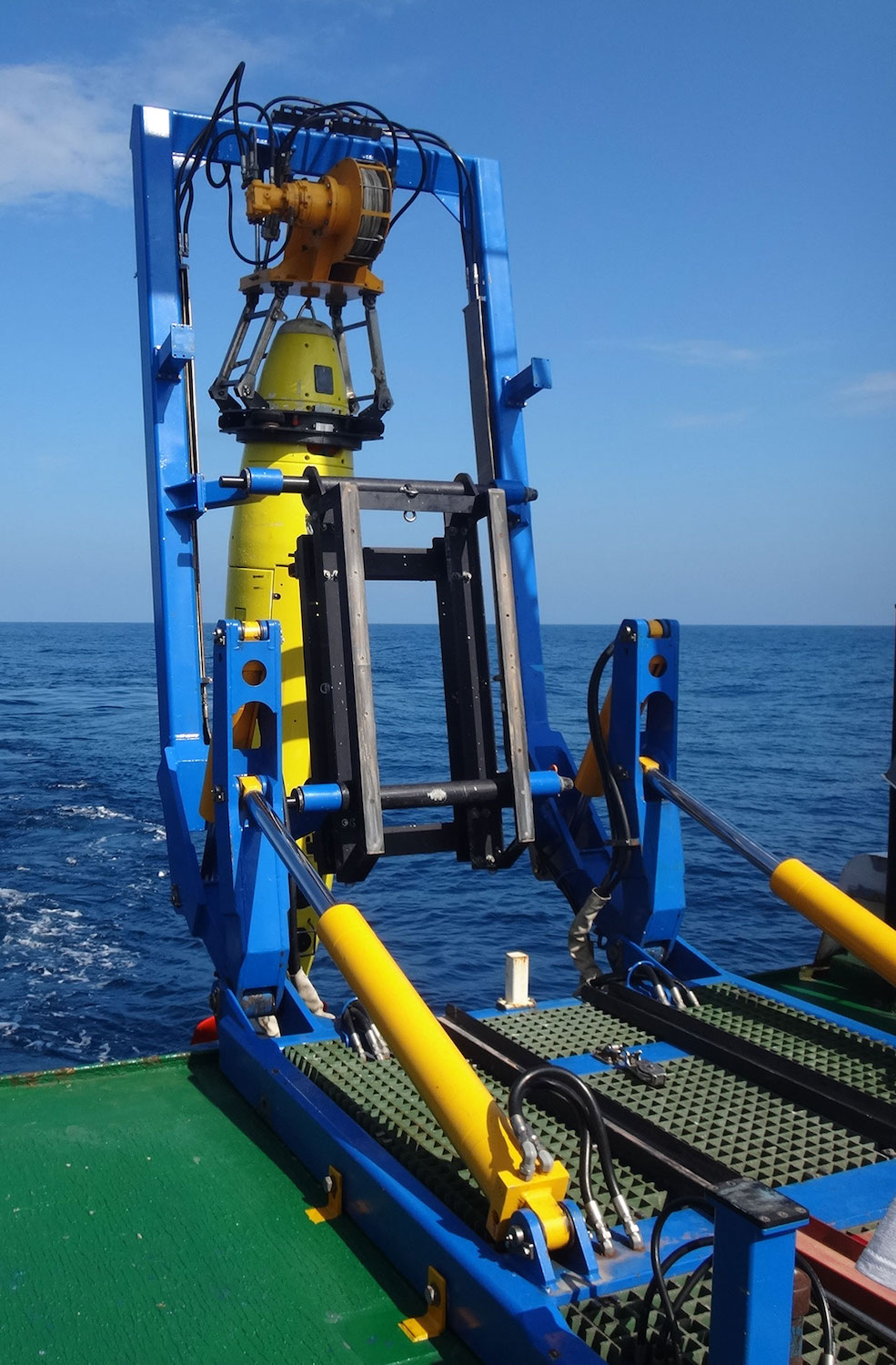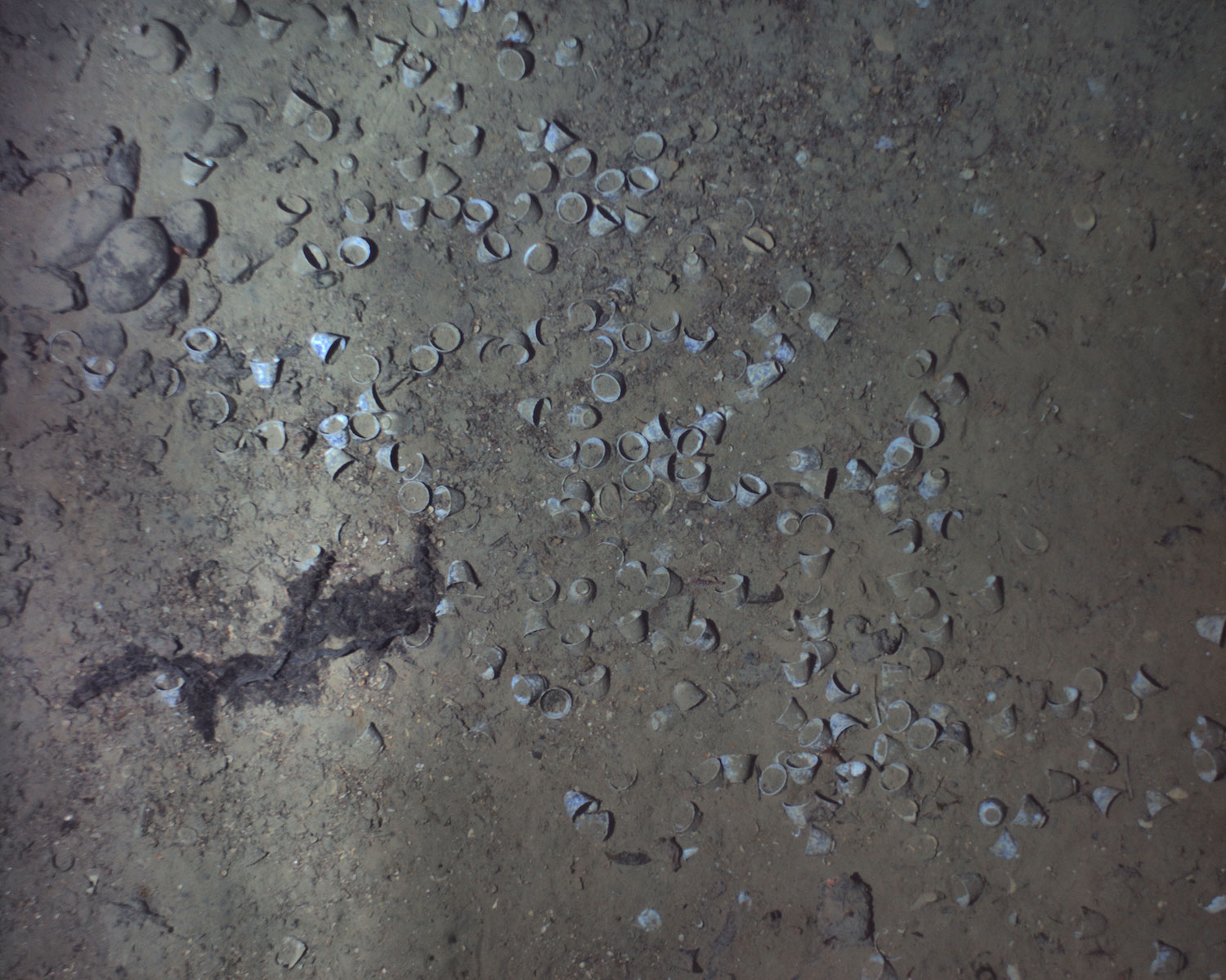Archaeologists Find 'Holy Grail of Shipwrecks' Carrying Stash Worth Up to $17 Billion

In 1708, the San José— a Spanish galleon ship carrying a stash of gold, silver and emeralds — sank during a fierce battle against the British in the Caribbean Sea. Now, after sitting at the bottom of the ocean for 310 years, the San José's shipwreck has finally been officially identified, thanks to an analysis of the distinctive bronze cannons that sank with the ship.
These bronze cannons still have ornate dolphins engraved on them, according to recordings made by the REMUS 6000, an autonomous underwater vehicle (AUV) that got within 30 feet (9.1 meters) of the shipwreck in 2015, according to Woods Hole Oceanographic Institution (WHOI).
Although WHOI has known these details since 2015, only recently did affiliated agencies — Maritime Archaeology Consultants (MAC), Switzerland AG and the Colombian government — give the researchers permission to release the details to the public. [See Photos of the San Jose Shipwreck]
Fiery end
The San José was equipped with 62 guns, but it was no match against the British. Warships would have escorted the San José and its treasures on most of its trips from the New World to Europe every year. In fact, when it sank, the San José was carrying a treasure mined in Peru that, today, is worth between $4 billion and $17 billion, Live Science previously reported. These riches were intended to help fuel the long-running War of Spanish Succession, a conflict the Spanish and French were fighting against the English.

But in 1708, the warship escorts were delayed, and the Spanish commander, Admiral José Fernandez de Santillan, count of Casa Alegre, decided to set sail anyway. That was a big mistake. Four English ships confronted the San José and its crew of more than 500 men. After a bloody cannon fight, the San José erupted into flames and sank to the bottom of the ocean.
Treasure hunters and archaeologists have been trying to locate it ever since.
That goal was accomplished on Nov. 27, 2015, when an international team of scientists found a shipwreck while aboard the Colombian Navy research ship ARC Malpelo, WHOI said. The wreck was found about 2,000 feet (600 m) underwater in a search that was approved by the Colombian Ministry of Culture.
Sign up for the Live Science daily newsletter now
Get the world’s most fascinating discoveries delivered straight to your inbox.
However, at the time, it wasn't clear whether the wreck was actually that of the San José or of another ship. So, in 2015, WHOI sent the REMUS 6000, which had helped initially locate the shipwreck off of Colombia's Barú Peninsula, to take a closer look.
"The REMUS 6000 was the ideal tool for the job, since it's capable of conducting long-duration missions over wide areas," Mike Purcell, WHOI engineer and expedition leader, said in a statement.
The AUV's recordings showed that the ship was partially covered in sediment. The decorative carving on the cannons, filmed during a subsequent dive, allowed Roger Dooley, the lead marine archaeologist at MAC, to confirm that the wreck was the San José, WHOI said.

The San José has considerable cultural and historical significance, as it holds artifacts that will help historians learn about Europe's economic, social and political climate during the early 18th century, WHOI noted. The Colombian government plans to build a museum and conservation laboratory to preserve and display the shipwreck's contents, including its cannons and ceramics.
The REMUS 6000 is owned by the Dalio Foundation and operated by WHOI. The vehicle has also played a key role in other deep-sea missions. In 2009, it helped find the wreckage of Air France Flight 447, the plane that crashed when it was flying from Brazil to France. And in 2010, the AUV helped map and photograph the Titanic's wreck site, WHOI said.
Original article on Live Science.

Laura is the archaeology and Life's Little Mysteries editor at Live Science. She also reports on general science, including paleontology. Her work has appeared in The New York Times, Scholastic, Popular Science and Spectrum, a site on autism research. She has won multiple awards from the Society of Professional Journalists and the Washington Newspaper Publishers Association for her reporting at a weekly newspaper near Seattle. Laura holds a bachelor's degree in English literature and psychology from Washington University in St. Louis and a master's degree in science writing from NYU.









